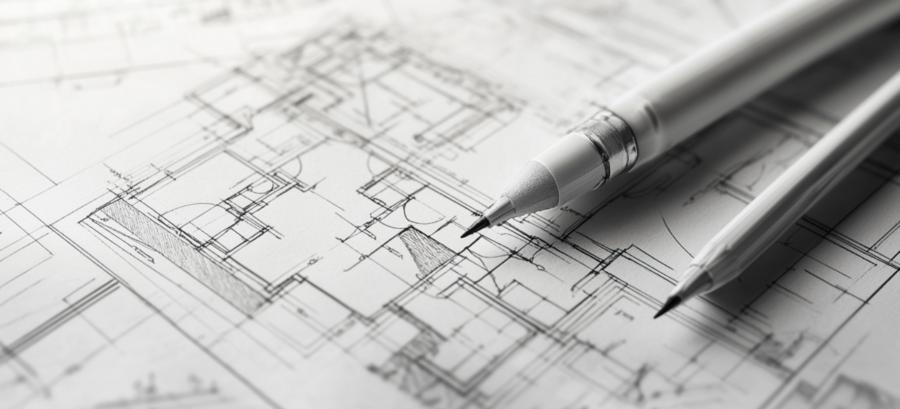The Cold Hard Truth About Your Floors
Most homeowners obsess over walls and roofs, piling on insulation like a squirrel hoarding acorns for winter. But what’s underfoot? That chilly, neglected underbelly of your home might be bleeding heat faster than a drafty attic. An uninsulated foundation, basement, or crawl space turns your energy bill into a horror story. And no, wearing thick socks isn’t a long-term solution.Slab Foundations: Concrete Evidence for Insulation
A slab-on-grade foundation is a solid chunk of concrete poured directly onto the ground. It’s a practical choice, but if it’s left uninsulated, it becomes a massive heat sink. Heat loves to escape downward, and without proper insulation, your cozy indoor warmth is seeping straight into the dirt.Insulated slab foundations use rigid foam insulation beneath and around the slab, preventing heat loss and keeping floors more comfortable. Think of it as a thermal blanket for your house—except one that doesn’t need constant readjusting at night.
Basements: Not Just for Storage and Spiders
A basement can be a secret weapon in energy efficiency—or a subterranean icebox dragging down your heating system. Many older homes have basements that were never meant to be livable, which means they lack proper insulation. Without it, cold air seeps through foundation walls, and moisture problems make everything worse.Proper basement insulation comes in two main forms: interior and exterior. Interior insulation typically involves rigid foam or spray foam against the walls, keeping heat in and moisture out. Exterior insulation, installed before backfilling, wraps around the foundation like a protective shell. Both options reduce heat loss and help prevent the damp, musty dungeon effect.
Crawl Spaces: Tiny but Mighty
Crawl spaces are the middle child of home foundations—often ignored, rarely appreciated, but crucial to home efficiency. Whether your crawl space is ventilated or unventilated determines how it should be insulated.A ventilated crawl space benefits from insulation placed between floor joists, keeping cold air from creeping into your living space. Meanwhile, unventilated crawl spaces should have insulation along foundation walls, effectively turning them into a mini-basement. And before anyone asks—yes, a properly insulated crawl space also means fewer encounters with mysterious scuttling noises in the night.
Moisture Matters More Than You Think
Insulation isn’t just about keeping heat in; it’s also about keeping moisture out. A poorly insulated foundation invites condensation, which invites mold, which invites a world of regret. Insulation materials like closed-cell spray foam not only insulate but also create a moisture barrier. And let’s be honest—anything that keeps your basement from smelling like a forgotten gym bag is worth the investment.Energy Savings That Add Up
When people think about energy efficiency, they picture thick attic insulation, triple-pane windows, and high-tech thermostats. But an uninsulated foundation quietly sabotages all of that effort. The Department of Energy estimates that a properly insulated basement can cut heating costs by up to 30%. That’s not pocket change—that’s a serious dent in your energy bill. And it’s not just about winter. In summer, foundation insulation helps keep cool air from escaping, reducing the workload on your air conditioning. Your HVAC system will thank you by lasting longer and breaking down less.Choosing the Right Insulation for the Job
Not all insulation is created equal, and slapping fiberglass batts onto everything won’t solve your problems. Here’s a quick rundown of the best choices for different parts of your foundation:– Rigid Foam Boards: Excellent for basements and slab foundations. They provide a high R-value and resist moisture. Plus, they won’t sag over time like some other materials.
– Spray Foam: A premium choice that seals gaps and provides both insulation and moisture control. Ideal for crawl spaces and tricky areas.
– Insulated Concrete Forms (ICFs): If you’re building from scratch, these are a game-changer. They integrate insulation into the foundation itself, making your home ultra-efficient from the ground up.
The Myth of “Natural Insulation”
Some people argue that underground areas naturally stay warmer in winter and cooler in summer. While that’s true to an extent, relying on the earth alone for insulation is like assuming a thin blanket will keep you warm in a snowstorm. Without proper insulation, soil temperature fluctuations will still affect your home, making indoor conditions unpredictable and inefficient.A Foundation for Comfort and Savings
If walls and roofs are the headline act of home insulation, foundations and subfloors are the unsung heroes working behind the scenes. Investing in proper insulation beneath your feet isn’t just a luxury—it’s a smart financial move that improves comfort, lowers energy costs, and extends the life of your home.If you ever feel a mysterious draft, don’t just glare at your windows. Look down. Your floors, basement, and foundation might be whispering, “Insulate me.” And unlike most household complaints, this is one you can actually fix.
Article kindly provided by insulationcommandos.com/omaha/


